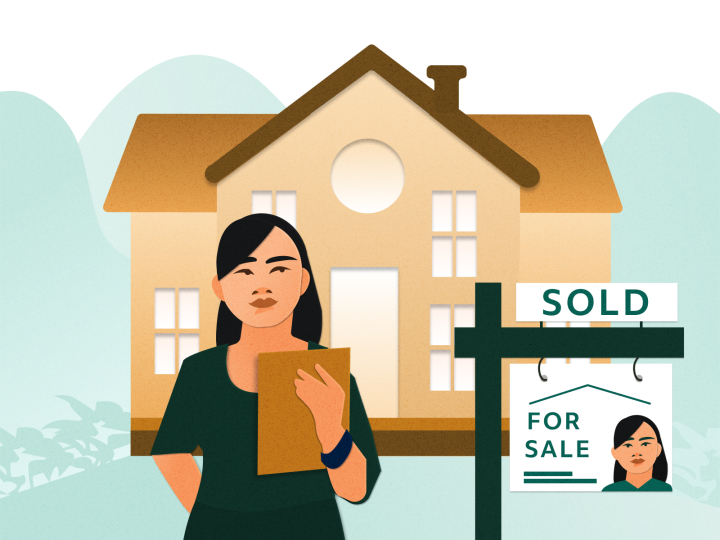The Future of Real Estate: Patterns and Opportunities to Watch
As the real estate landscape advances, it comes to be significantly essential to comprehend the emerging patterns and chances that will define the sector in the coming years. With these characteristics at play, a more detailed evaluation of the approaches and adjustments necessary for success reveals interesting possibilities that could reshape financial investment methods and market actions.
Technical Developments in Property
In the last few years, the property market has actually welcomed a wave of technological developments that are changing conventional practices. These developments have significantly improved efficiency, openness, and decision-making procedures within the sector. One of one of the most significant technologies is the increase of large data analytics, which enables actual estate specialists to examine market trends, predict residential property worths, and recognize financial investment opportunities with extraordinary accuracy. This data-driven method makes it possible for stakeholders to make educated choices and reduces the dangers related to home purchases.
In addition, online fact (VIRTUAL REALITY) and boosted fact (AR) technologies are reinventing home marketing by offering immersive experiences for prospective buyers and renters. These tools permit customers to carry out virtual tours of residential or commercial properties, therefore streamlining the search process and improving customer interaction. Blockchain technology is getting grip as a way to safeguard purchases and keep transparent documents, thereby lessening scams and accelerating the closing process.
Smart home modern technologies are additionally becoming increasingly common, enabling property owners to check and control their residential properties remotely (Real Estate Lockhart). Jointly, these technical developments are improving the landscape of genuine estate, fostering a more effective, transparent, and customer-centric sector
Demand for Lasting Properties
As customers progressively prioritize ecological obligation, the demand for sustainable residential properties has actually surged in the property market. This change reflects a more comprehensive social fad toward sustainability, with property buyers and investors looking for buildings that reduce environmental impact while making best use of power efficiency. Functions such as solar panels, energy-efficient appliances, and lasting structure products are now checked out as important instead of optional.

Furthermore, the surge of eco-friendly neighborhoods, which prioritize walkability and access to public transport, further highlights this trend. These advancements appeal to eco conscious customers and promote a much healthier way of living.
As the need for lasting homes continues to climb, sector stakeholders should adjust to these assumptions. By welcoming ingenious methods and prioritizing sustainability, the realty industry can not just satisfy consumer need but additionally add to a more lasting future.
Altering Customer Demographics

Additionally, the aging populace is improving demand for real estate. Baby boomers are seeking scaled down homes that provide ease of access and low maintenance, typically preferring urban settings with nearby amenities. This shift requires a concentrate on multi-generational housing options that fit varying demands.
Additionally, social variety is playing a pivotal function in actual estate trends. As these group shifts proceed to progress, real estate specialists need to adapt their methods to deal with the needs of these diverse buyers (Real Estate Lockhart).
Increase of Remote Job Influence
Progressively, the rise of remote job is transforming the property landscape, motivating substantial changes in buyer preferences and place choices. As workers enjoy the flexibility of functioning from home, several are reassessing their domestic requirements, leading to a rise sought after for residential or commercial properties in country and suburban areas. This trend is mainly driven by the need for even more sizable living atmospheres that can accommodate home workplaces and a far better high quality of life.
Furthermore, metropolitan centers, as soon as the prime focus for buyers, are seeing a gradual decline popular as people prioritize cost and access to nature. Genuine estate developers and investors are moving Recommended Site their emphasis towards properties Going Here that use home office areas, outside services, and proximity to crucial solutions.
This advancing landscape requires a reevaluation of traditional market techniques. Property professionals should adapt to the changing choices of purchasers, highlighting the value of way of living elements in their advertising and marketing approaches. Additionally, home builders are progressively focusing on flexible floor plans that satisfy the double requirements of living and working, guaranteeing that they continue to be affordable in a swiftly altering market. The effects of remote service realty are extensive, forming future trends and chances.
Financial Investment Opportunities in Arising Markets
Investment possibilities in emerging markets are continually bring in interest from investor seeking diversity and development possibility. These markets, defined by quick economic advancement, boosting urbanization, and an expanding center course, present special potential customers for wise investors. Nations in Southeast Asia, Africa, and Latin America are seeing substantial framework improvements and desirable government plans, which even more improve their allure.
Genuine estate sectors such as household, industrial, and logistics are experiencing increased demand because of metropolitan migration and developing customer preferences. Especially, cities like Ho Chi Minh City, Nairobi, and Medellín are ending up being hotspots for financial investment as a result of their increasing economies and youthful demographics.
Capitalists should carry out comprehensive market evaluations to recognize essential fads, such as changes in populace dynamics and economic security, which can affect home values. Furthermore, partnerships with local property firms can promote effective entrance and navigation in these markets.
Nonetheless, it's important to be conscious of prospective threats, including political instability and governing challenges. By considering these elements and taking on a long-term viewpoint, investors can effectively profit from the financially rewarding opportunities arising in these creating areas.

Conclusion
To conclude, the future of property will be significantly influenced by technological innovations, an expanding focus on sustainability, and progressing customer demographics. The rise of remote work is reshaping real estate preferences, especially in suburbs. see here Emerging markets existing significant financial investment chances for stakeholders willing to adjust to these changes. Navigating this transforming landscape will certainly need strategic partnerships and a keen understanding of market dynamics to profit from the trends shaping the industry.
As the actual estate landscape develops, it ends up being progressively necessary to understand the arising fads and possibilities that will define the market in the coming years. One of the most notable innovations is the increase of big data analytics, which allows actual estate specialists to evaluate market patterns, forecast home values, and identify investment possibilities with extraordinary precision.As customers increasingly focus on ecological obligation, the demand for lasting properties has actually surged in the genuine estate market. The ramifications of remote job on actual estate are extensive, shaping future patterns and opportunities.
Investment chances in arising markets are consistently drawing in interest from real estate capitalists looking for diversification and development capacity.